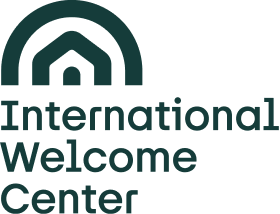Who We Serve
At the International Welcome Center, we bridge the gap between dreams and reality for the foreign-born residents of the greater Akron area. Acting as representatives of Christ, our mission is to come alongside refugees and immigrants, providing them with essential services, from language lessons to legal guidance. Together, we build a vibrant community where every individual feels welcomed, empowered, and truly at home. Our collective efforts weave a rich tapestry of diverse stories, all unified in pursuit of happiness and hope. We are steadfast in our vision of a world where every person, no matter their origin, has a chance to thrive and belong.
Frequently Asked Questions
At the International Welcome Center, we firmly believe that education is power. We understand that fostering understanding is key to building a supportive and empowered community. To that end, we’ve compiled explanations to address some frequently asked questions about the clients we serve. Our hope is that by sharing this information, we can together, build a vibrant community where every individual feels welcomed, empowered, and truly at home.
What is a refugee?
Refugees are people forced to flee their own country and seek safety in another country. They are unable to return to their own country because of feared persecution as a result of who they are, what they believe in or say, or because of armed conflict, violence or serious public disorder.
The US has had an Office of Refugee Resettlement that has brought vetted refugees to the US since 1980. The President sets the annual ceiling in October and then the ORR brings individuals to the US underneath that cap. Refugees in the US arrive by plane. They pay back their travel loan to the US government. They are legally allowed to work. They pay taxes. They get a small amount of assistance when they arrive. They are eligible for green cards after one year and citizenship after five years (and passing a test and paying money).
How do they get to America and what is their legal status?
Refugees are flown to the US by the State Department. They have to pay back their travel loan. The are legally brought here and eligible for green cards after a year and citizenship after 5 years and passing their citizenship test. The document they arrive on i-94 qualifies them to work legally.
What is an asylum seeker?
An asylum seeker often fits the definition of a refugee but has not received permission to stay. They have crossed an international border to seek asylum but it is pending their defensive case in court. Those who come through the Office of Refugee Resettlement have been granted permanent asylum.
What is the economic impact of refugees coming to the US?
Refugees pay taxes. They start businesses. People are creators and with new people comes the potential for all the creativity and work and ideas they have. The US economy is so large in part because of the generations of the history of us being an immigrant country.
Between 1990 and 2022, the United States welcomed over 2.1 million refugees and accepted over 800,000 asylees. While the purpose of granting visas to refugees and asylees in humanitarian, they do impact the United States economically. This analysis estimates the fiscal impact of refugees and asylees on federal, state, and local governments from 2005 to 2019.
- The net fiscal impact of refugees and asylees was positive over the 15 year period, at $123.8 billion. This means that refugees and asylees contributed more revenue than they cost in expenditures to the government. The net fiscal benefit to the federal government was estimated at $31.5 billion, and the net fiscal benefit to state and local govenments was estimated at $92.3 billion.
- Governmental expenditures on refugees and asylees totalled an estimated $457.2 billion over the 15 year period. Expenditures by the federal government represented 72.5 percent of the total, at $331.5 billion. State and local government expenditures were 27.5 percent of the total, at $125.7 billion.
- Refugees and asylees contributed an estimated $581 billion in revenue to federal, state, and local governments. They contributed an estimated $363 billion to the federal government through payroll, income, and excise taxes, and $218 billion to state and local governments, through income, sales, and property taxes.
- Including refugees and asylees and their spouses and children under age 18, most of whom are US citizens, expenditures totalled $723.4 billion. Refugees, asylees, and their immediate families contributed an estimated $739.4 billion in revenue to all levels of government.
- When compared with the total US population on a per capita basis, refugees and asylees had a comparable net fiscal impact.
To Learn More:
June 2023 Report on the Economic Impact of Refugees on the US
Immigrants benefit US tax payers
Immigrants in Northeast Ohio pay over 1.5 Billion in Taxes
Myths and Facts about Refugees
Unlocking America’s Potential: How Immigration Fuels Economic Growth and Our Competitive Advantage
Report: Welcome to Akron, How Immigrants and Refugees are Contributing to Akron’s Economic Growth
Contact Us
At the International Welcome Center, our heart beats with a passion for empowering refugees and immigrants, helping them weave their unique stories into the fabric of our community. Each connection, every partnership, fuels our mission.
Whether you’re interested in volunteering, giving, or simply learning more, we’re eager to connect with you. Together, we can provide more than just services; we offer a sense of belonging and tools for success. Reach out today, and let’s embark on this transformative journey together.
© The International Welcome Center, All Rights Reserved. The International Welcome Center is a 501(c)3 non-profit organization. Privacy Policy.
